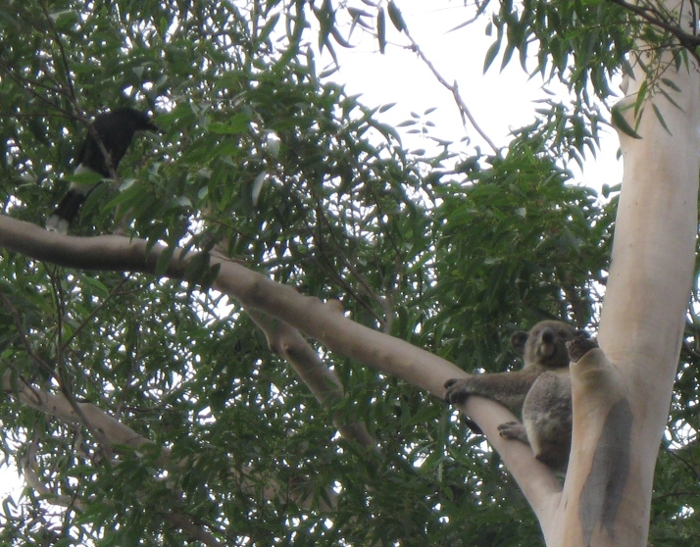Koala visits UNE Heritage Centre
Not a link per se, but worthy of sharing nonetheless! A couple of weeks ago a Koala stopped by for a visit in one of the Gum Trees outside the University of New England Heritage Centre. Next stop Western Sydney Records Centre!
State Records NSW’s Open Data Project
This is the project site for State Records NSW’s Open Data Project. The aim of this project is to identify datasets relating to the NSW State Archives collection and publish them in accessible ways.Data published by this project could spark new interfaces to the collection, create new possibilities for federated searching, or allow creative re-purposing such as in visualisations or in applications such as The History Wall.
As a first step, State Records NSW is publishing data from its online catalogue, Archives Investigator. This data is in a raw form and can be downloaded from the Datasets page.
Making computers more human (Inside the World of Algorithms)
Computers are only as smart as their algorithms – man-made software recipes for calculation, the basic building blocks of computerised thought……
…….Expanding the horizons of computer intelligence – mimicking human understanding in more realms – is one of the grand challenges in science.
Read the full article by Steve Lohr at the Sydney Morning Herald.
Metadata’s Family Tree
We think of metadata as a modern concept, a product of the computer age and the online world. But metadata is actually an ancient tool in the world of information management.
Pioneer Sites Blog Launched by Sisters of Charity

Blog header features a tapestry designed and handwoven by Margaret Grafton in 1988 to mark centenary of the Sisters' arrival in Australia. Image courtesy St Vincent's Hospital Sydney.
Our pioneer Sisters, the Irish Sisters of Charity, the first “women religious” to come to Australia in 1838 as missionaries, are inextricably linked with the story of the early Australian colony. This blog offers a visual trail into the places of the colony they knew and experienced.
Top 40 Geneaology Blogs of 2011
Last year, Family Tree Magazine honored 40 top-notch genealogy blogs. Readers have chosen their favorites again this year, with an expert panel weighing in on the judging. More than half this year’s winners are new to the Top 40, more evidence that blogs are on the rise. Whether you’re a blogophile or have yet to click and comment, you’ll find plenty of fascinating talkers and topics in this year’s Family Tree 40.
Tweeting for your country: A personal view of some principles for social networking
The principles are divided into three groups – guidance, risks and entry. These three are each represented by an acronym – LEFTS, RIGHT, and YES. I have liked acronym-based principles since my dad helped me memorize the rivers of NSW for geography in primary school. Of course, I can’t remember them now – but I blame the drought for that.
Building relationships – from the Museum sector
…This expresses itself most powerfully in museums when we talk about building relationships with visitors over time. If I go on a date with you and we have fun, I develop some expectations about what will happen the next time I see you. I expect you’ll remember some basic things about me–say, my name. But museums are one-night stand amnesiacs in the relationship department. A visitor comes once, has a great experience, starts “building the relationship,” and then the next time she shows up, no one at the front desk knows anything about her.
Read What does it mean to have a relationship with a Museum? at museumtwo.blogspot.com
Warring bicycles
It is not well known that the AIF had cycling units that were used in many of the major battles during the First World War such as Messines in June 1917, and Passchendale July 1917. These units were deployed to the front line as well as undertaking cable burying, traffic control and reconnaissance work.
Read the full article at the Australian War Memorial website

